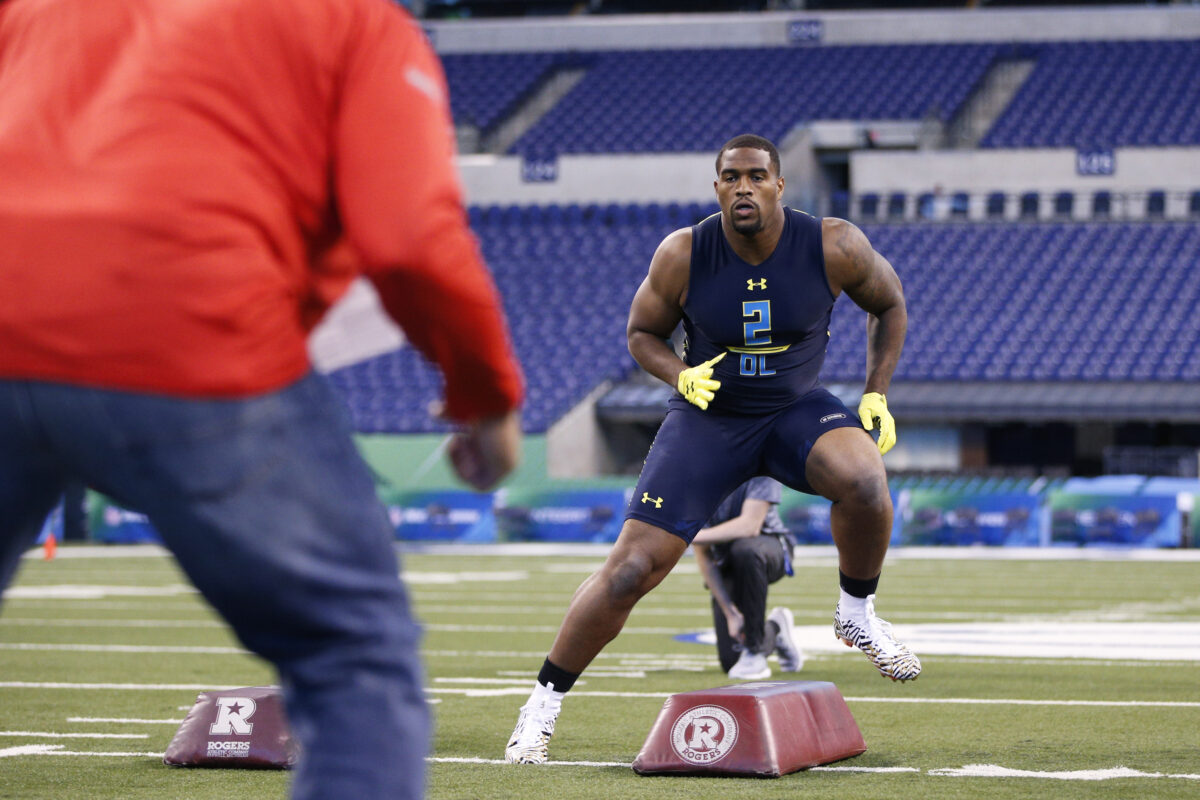It’s no secret that the New Orleans Saints pass rush needs to step up. They’re going into Week 10 tied for the fourth-fewest sacks around the league (17) and ranking tenth-worst in pressure rate (19.7% at Pro Football Reference). Carl Granderson is a productive rusher, but Cameron Jordan is past his prime, and the Saints haven’t gotten much out of backups Tanoh Kpassagnon and Isaiah Foskey with Payton Turner on the mend.
So it’s no surprise that the latest 2024 mock draft has the Saints picking a dynamic young pass rusher. Pro Football Focus analyst Trevor Sikkema has the Saints going with Alabama edge rusher Dallas Turner at No. 19 overall, who would add a lot of juice for New Orleans up front:
“It feels like it’s going to be a trench pick for the Saints this offseason, whether that’s the offensive or defensive line. With a lot of the top offensive tackles already off the board, Turner is a good value pick here for New Orleans. He is more of an outside linebacker type of edge player and is having a career year as a pass-rusher for the Crimson Tide, sporting a 17.3% pass-rush win percentage. Turner has always displayed good explosiveness, but he is flashing added strength this season, too.”
Turner’s talents aren’t in question. It’s whether his playmaking ability could convince the Saints to break from their established prototypes at defensive end. Turner weighed in at 6-foot-4 and 242 pounds for spring camp this year, up a couple of pounds from his playing weight last season. And that doesn’t compare favorably to the players Allen has picked in his stops with the Saints, Raiders, and Broncos.
That’s almost ten pounds lighter than Khalil Mack (6-foot-2.5, 251) was coming out of college; Von Miller was a little heavier (6-foot-2.5, 246), too. That was a decade ago and these days Allen has a preference for heavier players out on the edge. Barring a sudden change, he’ll continue to stick to it. Look at the listed weights on the Saints’ website roster:
- Tanoh Kpassagnon: 6-foot-7, 289 pounds
- Cameron Jordan: 6-foot-4, 287 pounds
- Kyle Phillips: 6-foot-4, 277 pounds
- Payton Turner: 6-foot-6, 270 pounds
- Jordan Willis: 6-foot-4, 270 pounds
- Niko Lalos: 6-foot-5, 269 pounds
- Isaiah Foskey: 6-foot-5, 265 pounds
- Carl Granderson: 6-foot-5, 261 pounds
These listed weights aren’t all accurate (Granderson, for example, bulked up to 285 pounds for training camp last year) but the point is that Turner would need to put on at least 20 pounds to even get on the field for the Saints — at least in the role he’s best at, rushing against left tackles off the edge.
If the Saints did draft Turner he’d likely be stuck in the same role as Zack Baun. Another accomplished pass rusher coming out of college, the Saints converted the 6-foot-3, 225-pound Baun to an off-ball linebacker role where he’s dropping into coverage on 55.2% of his snaps on passing downs. For comparison, Turner is playing in coverage on just 25.7% of passing plays this season, an uptick from the 22.2% he experienced earlier in his career. Maybe his college coaches are preparing him for the kind of assignments he would see from NFL coaches like Allen.
Still, it’s frustrating to see a skilled pass rusher coming up from the college ranks and projected to go off the board when the Saints are expected to be on the clock while knowing they wouldn’t play him to his strengths — if they’d even consider drafting him. Turner’s proven production as a pass rusher and high-end athleticism will likely put him on their radar, but if the team is still running Allen’s defensive scheme, it’s tough to see Turner fitting into it.
[lawrence-auto-related count=4]


